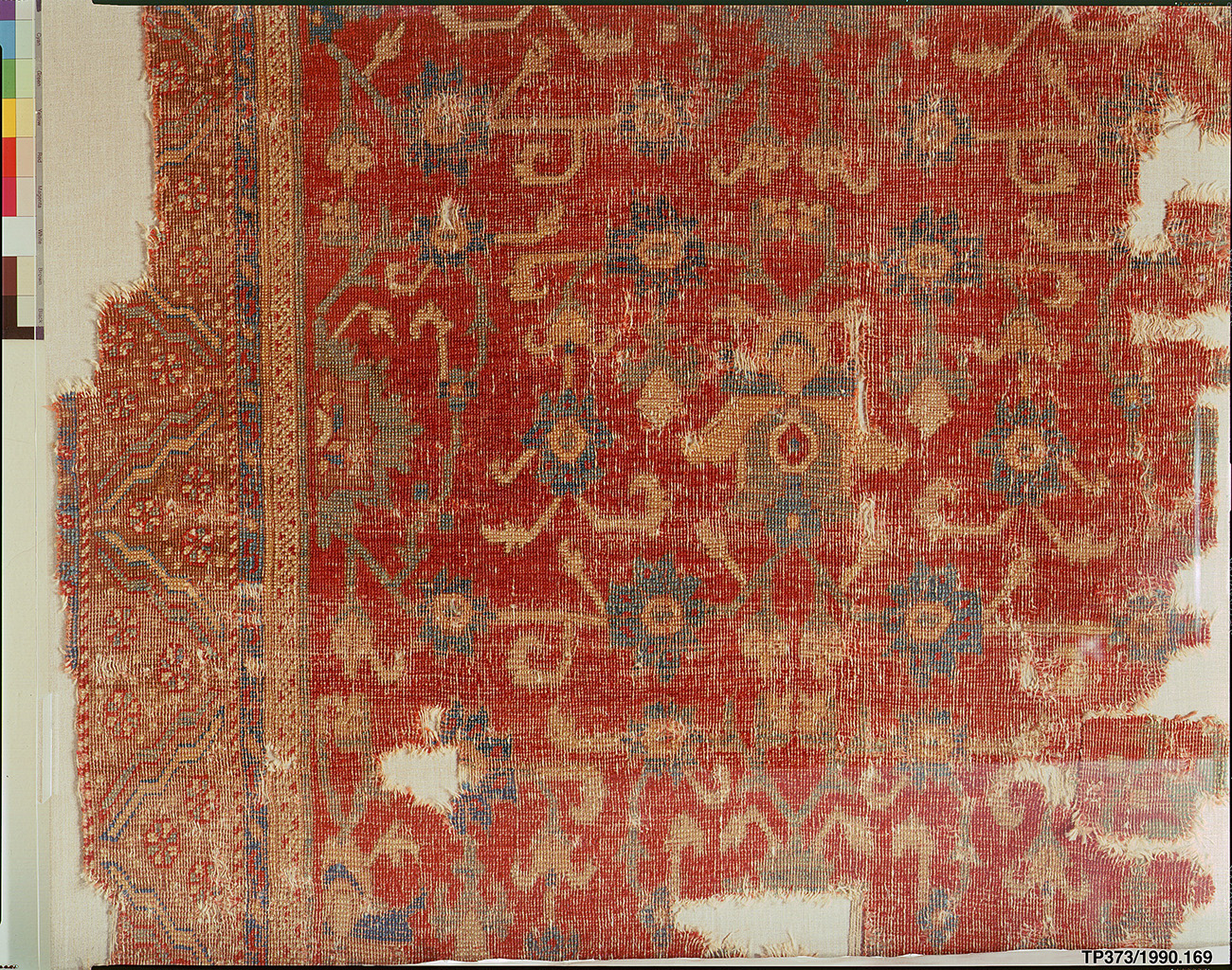|
17th century
Anatolian carpet fragment, The Metropolitan Museum of Art,
New York
Medium: Animal hair (warp and
weft), wool (pile); asymmetrically knotted pile
Dimensions: L. 126 x
W. 49.5 in. (343 x 135 cm)
Credit Line: Gift of Marshall
and Marilyn R. Wolf Foundation, 1990
Accession Number: 1990.169
This worn but still impressive fragment is a
distinctive member
of the so-called Chessboard rug group, named for a
field
design consisting of rows of hexagons within square com-
partments. Over thirty examples of Chessboard rugs with
the
conventional field design are known, including one in the
Museum's
collection (acc. no. 69.z67).
The origin of these rugs remains unresolved.
Cairo, Damascus,
and Anatolia have all been suggested, but eastern
Anatolia,
where four examples were found in mosques, seems the most
likely area. No example bears a date, but rugs with the standard
design were depicted in European tapestries and paintings
from about
1540 until late in the seventeenth century, suggest-
ing an
approximate period of production.
The stiff, straight wool (goat?) of the
foundation, the style of
the palmettes in the field, the designs of
two minor borders,
and especially the colors (blue and blue-green on a
red ground)
are typical of Chessboard rugs, but the field and main
border
designs are unique. The field's repeating units of stiffly
scroll-
ing vines with large palmettes and blossoms alternating at
their
centers is a Persian pattern passed down from the Ottoman
court. The connection to Turkish tradition (as opposed to
Persian or
Mamluk) is strong in the main border, but the
design of three balls
(here, rosettes) and double wavy lines,
popular in sixteenth- and
seventeenth-century Turkish tex-
tiles and rugs, is usually seen in
fields, not borders. This
design, originally symbolizing tiger stripes
and leopard spots,
reminds us that these woven masterpieces ultimately
derived
from animal skins.
Related references: Friedrich Spuhler,
"'Chessboard' Rugs," in Oriental
Carpet and Textile Studies, vol. z,
Carpets of the Mediterranean
Countries 1400-I6oo, London, I986, pp.
261-z69; Belkis Balpinar
and Udo Hirsch, Carpets of the Vakiflar
Museum Istanbul, Wesel,
I988, pp. 124-130, pls. 59, 6o.
|

